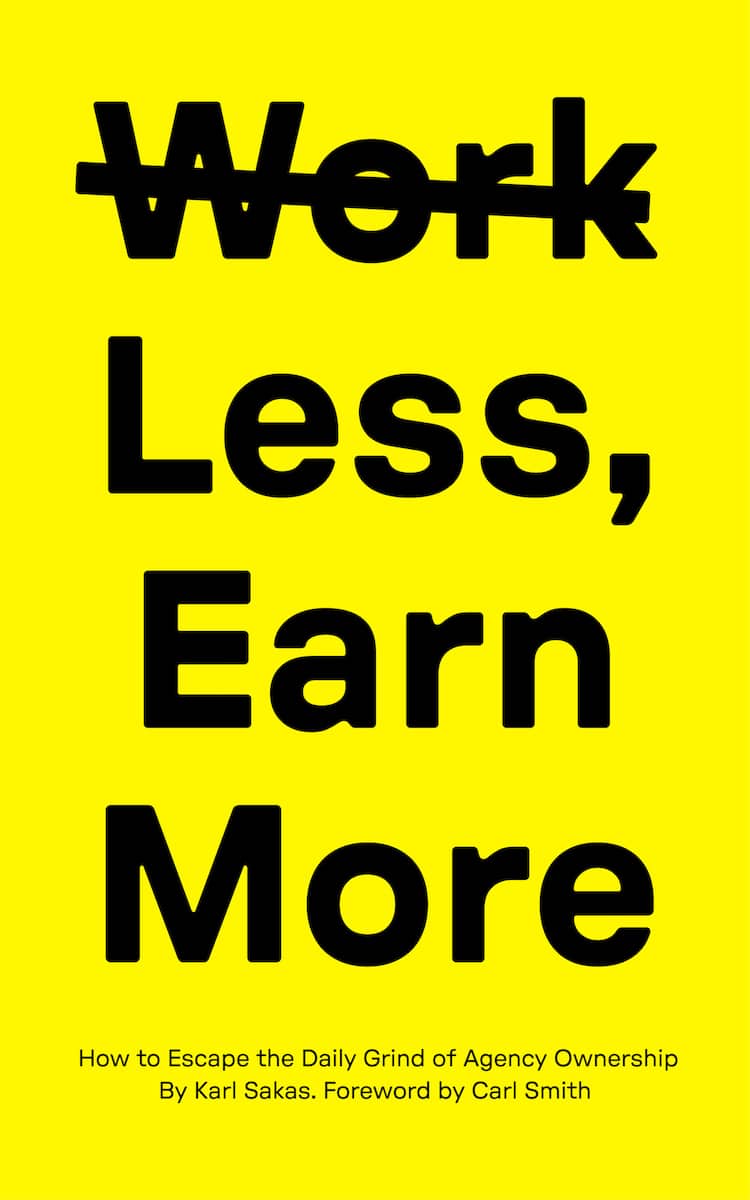Ready to scale your agency—without the usual growing pains? Don’t reinvent the wheel—I’ve helped owners of 400+ agencies worldwide, ranging from 1 to 700 full-time people.
Be strategic. One of the biggest factors in scaling is changing your team structure and agency roles. What worked at the beginning won’t work as you grow—you’ll experience client service problems, project management mixups, and low morale from your team.
The advice below applies primarily to digital marketing agencies between 10 and 100 people, or who want to grow within that range.
Be sure to identify where you fall on the “Lifestyle vs. Equity” agency continuum—agency owners run into problems when they grow in a way that conflicts with their values. [Last Updated: February 2024]
1-7 people: Use a “Functional” structure
Most agencies start out with a “functional” structure. That is, your “doer” subject matter experts (designers, developers, strategists, copywriters, etc.) all do client service on top of their main (“functional”) job.
This makes sense financially, since when you have 2-8 people, you need employees to juggle everything. You can’t afford to have a designer and a front-end developer and a back-end developer.
The challenge is that when clients need something outside their functional contact’s expertise, it’s harder for the agency to fulfill those requests.
This hurts turnaround time (your “doers” aren’t experts in routing work to others), hurts profits (because people are estimating work in areas outside their core expertise), and hurts deliverable quality (because very few people are great at design and development, or development and marketing strategy, or social media strategy and graphic design).
It’s also bad for retention, since you’re requiring employees to do things they don’t like doing. For instance, a client has a marketer doing PM in addition to marketing—not the marketer’s strength. That’ll eventually be a retention problem.
8+ people: Shift to an “Account Management” model
As digital agencies grow—typically as they approach 8-12 people—it makes sense to consider an “account management” structure (where PMs and/or account managers are clients’ primary contacts).
This approach helps you maximize the doers’ billables—since they can focus on writing/designing/developing instead of fielding calls and scheduling meetings—while also making it easier to serve and upsell clients—since account managers are experts in each client’s business, and they know which functional expert to call when the client needs that help.
Some agencies opt to divide the “experts in each client’s business” between account managers (who focus on keeping clients happy… and upsold) and strategists (who focus on client strategy). Here’s more on that approach.
15+ people: Build a sales & marketing team
At around 15-20 people, it often makes sense to hire a full-time salesperson so that other team members can focus on billable work—without neglecting the need to keep your sales pipeline full.
It’s also time to dedicate more people to marketing the agency itself. The combination of efforts will help you find sales leads—inbound and outbound.
Some clients hire a salesperson earlier. Before you do that, be sure to check that you have the profit margins, fulfillment team, and commission potential to make it work.
25+ people: Hire directors & other specialists
As you pass the 25+ mark, you should have a formal department structure. Your department directors (e.g., Strategy Director, Account Director, Design Director, Development Director) will be spending most of their time on strategy and staff development.
This layer of middle managers enables you to have 5-7 people reporting to you, instead of 20+ direct reports. You’ll hire those directors for their management skills, not their technical skills. This management “multiplier effect” will let you keep growing without getting dragged into the day-to-day concerns of dozens of people.
Your team will be increasingly specialized in all areas. When you had 15 people, your office manager might have done a mix of admin, HR, and bookkeeping. At 30 people, you’ll divide those roles between more people.
This specialization applies to “doers,” too—when your agency’s 5 people, it makes sense for a developer to do a mix of design, front-end, and back-end development. At 25 people, you might have several people who do just design, while other people handle front-end implementation.
As you grow to this point, you’ll shift from hiring the cheapest person available to hiring the best person available.
50+ people: C-suite and VPs
Between 50 and 100 people? At this point, it would be normal to have a C-level team (CEO, COO/CFO, potentially others) plus VPs overseeing key areas.
Each VP might have a few directors reporting to them, and the highly-billable client-facing people under the directors. There would typically be full-time marketing people for the agency itself—they and the salespeople probably report to a head of revenue.
Be careful about over-inflating titles and compensation. You can’t claw those back later.
Hiring a new employee? Be careful!
No matter your size, if you want to scale successfully, the key will be to ensure your next hire helps you grow in the right direction.
This is true whether you think you need to hire a C-level executive, an administrative person (a PM, an account manager, or a salesperson), or a highly-billable “doer” (designer, developer, strategist, or copywriter). And the smaller your agency, the bigger the impact of a good—or bad—hire.
Want an expert “second opinion” before you post a new job—or extend an offer to your top candidate? Let’s talk!
Question: What’s your next hire as you scale your agency?


